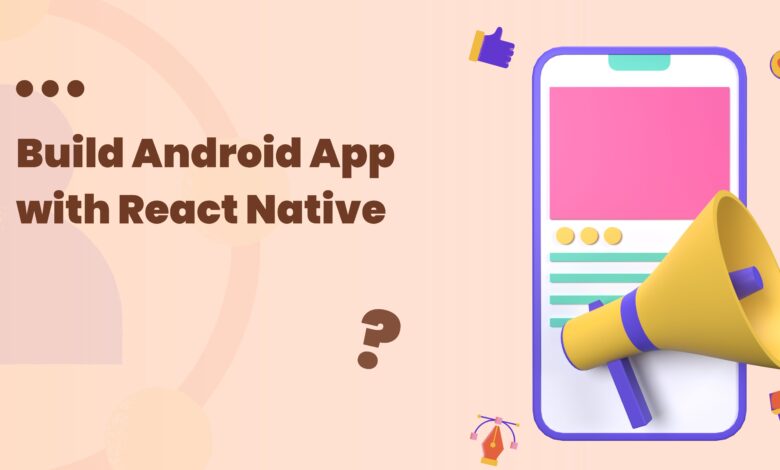Build Android App with React Native

In the fast-paced world of mobile app development, efficiency and versatility are paramount. One framework that has gained significant traction for building Android apps is React Native. Leveraging the power of React, a JavaScript library for building user interfaces, React Native allows developers to create robust, high-performance mobile applications for Android and iOS simultaneously. In this blog, we’ll explore the process of building an Android app with React Native and delve into the advantages it offers to developers.
1. Getting Started: Setting Up Your Environment
Before diving into the world of React Native development, it’s essential to set up your development environment. This typically involves installing Node.js, the React Native CLI, and Android Studio. Once these tools are in place, you’re ready to kickstart your React Native journey.
2. Creating Your First React Native Project:
Using the React Native CLI, initiating a new project is as simple as running a single command. This sets up the basic project structure, including essential files and directories. A hello world app can be created in minutes, providing a foundation for more complex applications.
3. Understanding the Basics: Components and States
React Native follows the principles of React, where UI components are created as reusable building blocks. Understanding the component lifecycle and managing state are crucial aspects of React Native development. Components can be functional or class-based, each serving a specific purpose in the app’s structure.
4. Styling and Layout:
Styling in React Native closely resembles web development with CSS, making it familiar for developers with front-end experience. Flexbox is the primary layout system, providing a powerful and intuitive way to design the app’s interface. React Native’s hot-reloading feature allows for real-time previews of style changes, streamlining the development process.
5. Navigating Between Screens:
Navigation is a fundamental aspect of mobile app development. React Navigation, a popular navigation library for React Native, simplifies the process of moving between different screens in your app. Whether it’s a simple stack navigation or a more complex tab navigation, React Navigation provides a flexible and customizable solution.
6. Accessing Native Features with Modules:
React Native offers a wide range of native modules that allow developers to access device features seamlessly. Whether it’s utilizing the device camera, handling geolocation, or integrating third-party libraries, React Native provides a bridge to native APIs, ensuring a native-like experience for users.
7. Testing and Debugging:
React Native comes equipped with tools like Expo and React Native Debugger, making testing and debugging a relatively smooth process. The ability to debug JavaScript code using Chrome DevTools and inspect the app’s UI elements simplifies the identification and resolution of issues.
8. Building and Deploying Your Android App:
Once your app is ready, the final steps involve building and deploying it to the Android platform. The React Native CLI simplifies this process, allowing developers to generate APK (Android Package) files that can be installed on Android devices.
Conclusion:
Building Android apps with React Native offers a compelling solution for developers seeking efficiency and code reusability. By leveraging the power of React, React Native streamlines the development process, allowing developers to create high-quality, cross-platform apps with ease. As the mobile landscape continues to evolve, React Native stands as a testament to the importance of frameworks that prioritize flexibility, speed, and a seamless user experience.







